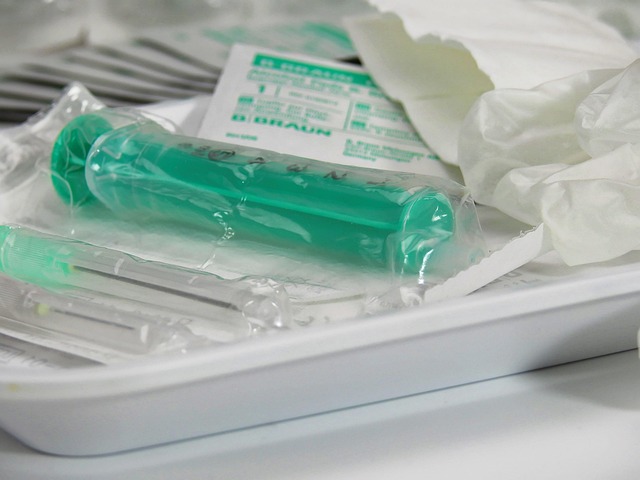Corticosteroid joint injections target inflammation and pain in affected joints, delivering powerful anti-inflammatory medication directly to the source. Frequency varies based on individual needs, symptoms, treatment plan, and medical history, typically ranging from every few months to every 8 weeks. Short courses are emphasized for safety, with close monitoring by healthcare professionals. While effective, these injections may lead to side effects if used long-term; alternative treatments should be explored if minimal improvement or adverse reactions occur.
“Curious about the frequency of corticosteroid joint injections? This guide offers a comprehensive overview for individuals seeking relief from pain and inflammation. Corticosteroid injections have become a popular treatment option, but understanding their usage is key. We’ll explore factors determining injection frequency, safety guidelines, and when alternative treatments might be preferable. By delving into these aspects, you’ll gain valuable insights into managing joint conditions effectively.”
Understanding Corticosteroid Joint Injections
Corticosteroid joint injections are a medical procedure used to reduce inflammation and pain in affected joints. These injections contain a powerful anti-inflammatory medication, typically cortisol, which is administered directly into the problematic joint space. This method delivers a concentrated dose of medication, offering potential relief for conditions like arthritis, bursitis, or tendonitis.
The frequency of corticosteroid joint injections can vary based on individual needs and the specific condition being treated. In some cases, patients may receive these injections every few months, while in others, they might be needed less frequently or even just once. It’s crucial to follow the guidance of a healthcare professional who can determine the appropriate injection schedule based on symptoms, joint response, and overall health.
Factors Influencing Injection Frequency
The frequency of corticosteroid joint injections can vary greatly depending on several factors. One of the primary considerations is the patient’s condition and the severity of their symptoms. For acute inflammation or pain, a doctor might recommend injections every 4 to 6 weeks, allowing time for the corticosteroids to reduce inflammation and provide relief. However, for chronic conditions or recurring joint issues, injections may be needed more frequently, sometimes as often as every 8 weeks or even more, based on individual responses.
Other influencing factors include the specific joint being treated and the overall treatment plan. For instance, knee or shoulder joints might require more frequent injections due to their mobility and constant use compared to less mobile joints like those in the ankle or wrist. Additionally, a patient’s age, medical history, and response to previous treatments can also play a role in determining the optimal injection frequency for corticosteroid joint injections.
Safe Usage Guidelines and Duration
The safe usage guidelines for corticosteroid joint injections vary based on individual circumstances, but there are general principles to consider. These powerful anti-inflammatory medications are typically reserved for short courses due to potential side effects. The duration of treatment is often limited to a few weeks or months, and injections should be administered with care and under medical supervision.
The primary goal is to provide pain relief and reduce inflammation while minimizing the risks associated with prolonged steroid use, such as tendon weakness, muscle atrophy, and bone density changes. Healthcare professionals carefully monitor patients during and after treatment, adjusting the frequency and dosage accordingly. It’s crucial to follow their advice regarding the number of injections per year to ensure safety and efficacy.
When to Consider Alternative Treatments
While corticosteroid joint injections can be highly effective in reducing pain and inflammation, they are typically considered a short-term solution. The frequency of these injections varies depending on individual needs and response to treatment. It’s important to note that repeated injections over an extended period may lead to side effects and long-term damage at the injection site. Therefore, considering alternative treatments becomes crucial when:
1. There’s no significant improvement or relief after several rounds of injections.
2. The pain returns swiftly after each injection, indicating a more complex underlying issue.
3. You’re experiencing adverse reactions or developing sensitivities to the corticosteroids used.
4. The joint or affected area shows signs of deterioration or loss of function despite consistent injections. In such cases, consulting with your healthcare provider is essential to explore other conservative management options, like physical therapy, medication adjustments, or even surgical intervention, depending on the severity and cause of the condition.
Corticosteroid joint injections can provide significant relief, but understanding their safe usage guidelines is crucial. The frequency of these injections depends on various factors and individual responses, typically ranging from several weeks to months apart. It’s essential to follow medical advice regarding duration and avoid excessive use due to potential side effects. If alternative treatments like physical therapy or medication prove more effective, it’s time to consider a change in approach to manage your condition long-term.
